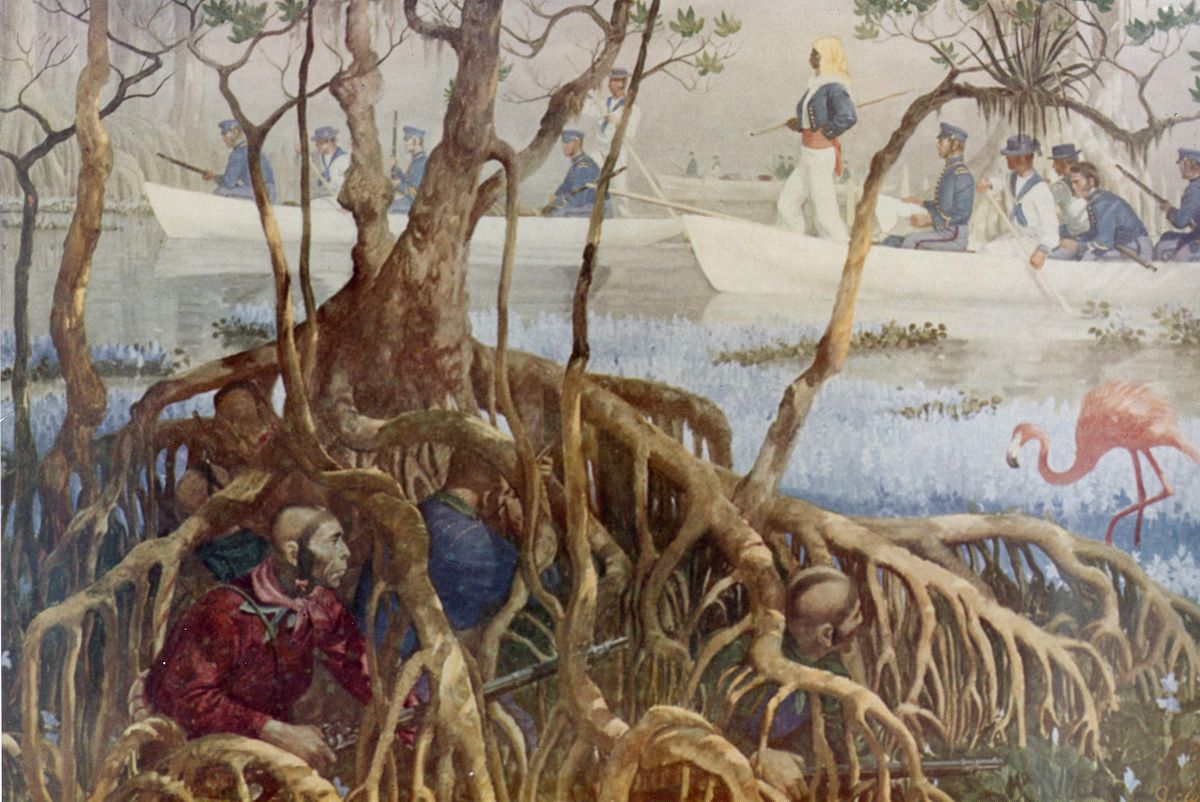
Seminole Wars
Florida, USAThe Seminole Wars (also known as the Florida Wars) were a series of three military conflicts between the United States and the Seminoles that took place in Florida between about 1816 and 1858. The Seminoles are a Native American nation which coalesced in northern Florida during the early 1700s, when the territory was still a Spanish colonial possession. Tensions grew between the Seminoles and settlers in the newly independent United States in the early 1800s, mainly because enslaved people regularly fled from Georgia into Spanish Florida, prompting slaveowners to conduct slave raids across the border. A series of cross-border skirmishes escalated into the First Seminole War in 1817, when General Andrew Jackson led an incursion into the territory over Spanish objections. Jackson's forces destroyed several Seminole and Black Seminole towns and briefly occupied Pensacola before withdrawing in 1818. The U.S. and Spain soon negotiated the transfer of the territory with the Adams-Onis Treaty of 1819.
The United States gained possession of Florida in 1821 and coerced the Seminoles into leaving their lands in the Florida panhandle for a large Indian reservation in the center of the peninsula per the Treaty of Moultrie Creek. About ten years later, however, the US government under President Andrew Jackson demanded that they leave Florida altogether and relocate to Indian Territory per the Indian Removal Act. A few bands reluctantly complied but most resisted violently, leading to the Second Seminole War (1835-1842), which was by far the longest and most wide-ranging of the three conflicts. Initially, less than 2000 Seminole warriors employed hit-and-run guerilla warfare tactics and knowledge of the land to evade and frustrate a combined U.S. Army and Marine force that grew to over 30,000. Instead of continuing to pursue these small bands, American commanders eventually changed their strategy and focused on seeking out and destroying hidden Seminole villages and crops, putting increasing pressure on resisters to surrender or starve with their families.
Most of the Seminole population had been relocated to Indian Country or killed by the mid-1840s, though several hundred settled in southwest Florida, where they were allowed to remain in an uneasy truce. Tensions over the growth of nearby Fort Myers led to renewed hostilities, and the Third Seminole War broke out in 1855. By the cessation of active fighting in 1858, the few remaining bands of Seminoles in Florida had fled deep into the Everglades to land unwanted by white settlers. Taken together, the Seminole Wars were the longest, most expensive, and most deadly of all American Indian Wars.
